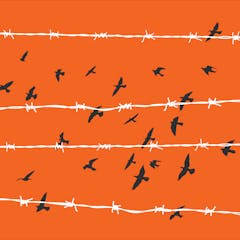
Articles on Correctional facilities
Displaying all articles

Inmates who are mothers tend to be accused of being bad parents.

Ghana needs a more effective approach to juvenile justice reform that considers the long-term impact of detention on youth offenders.

Australian governments play down the difference between child and adult offenders, and the costs are high

China has been very successful at crime control while South Africa has neglected rehabilitation and failed dismally at resettling ex-offenders.

New research shows correctional officers are vectors of infection, driving COVID-19 rates both inside prisons and in their communities.

One way to break the cycles that return offenders to prison is through the way society treats ex-offenders, providing them with basic human needs such as employment.

For the first time since 1994, incarcerated individuals can get federal aid to pay for college. A prison education scholar explains how higher education helps those who have run afoul of the law.

The COVID-19 pandemic is an opportunity to think critically about the place of prisons in society and how and why prisoners have been released in the past. COVID-19 could spark systemic change.

Urgently needed treatment for opioid use disorder is often denied to incarcerated people, feeding the crisis in prisons and jails.

Through stories of redemption, a professor who oversees a Maryland prison education program says the time has come to restore federal financial aid for America’s incarcerated.

Introducing companion animals to South African prisoners and encouraging them to write could aid their rehabilitation.

Hollywood pushes a fantasy version of what neuroscience can do in the courtroom. But the field does have real benefits to offer, right now: solid evidence on what would improve prisons.

Innovative design could be key to improving prisoners’ chances of rehabilitation and reducing their likelihood of re-offending.
